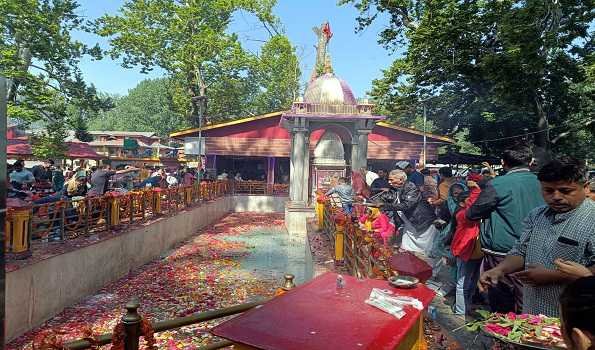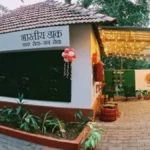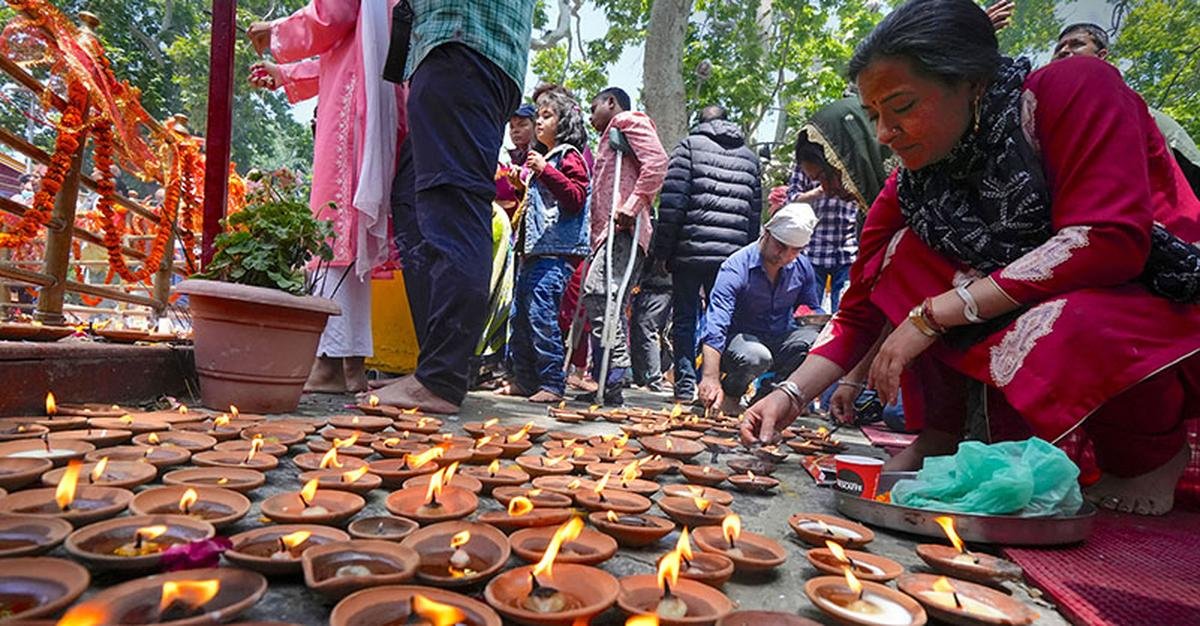Kashmiri Pandits Take Part in Kheer Bhawani Temple Festival
Revival of a Sacred Tradition
The Kheer Bhawani Temple Festival, celebrated at the historic Kheer Bhawani temple in Tulmulla, Ganderbal, witnessed the participation of thousands of Kashmiri Pandits. This significant event marks the return of the Pandit community to one of their most revered religious sites, fostering a sense of communal harmony and cultural revival.
Significance of the Festival
The Kheer Bhawani Festival is dedicated to the deity Ragnya Devi and holds immense spiritual importance for Kashmiri Pandits. Celebrated on the occasion of Jyestha Ashtami, devotees offer milk and kheer (rice pudding) to the sacred spring at the temple. The participation of the community in large numbers this year is a testament to the enduring faith and resilience of the Pandit community despite past adversities.
Government and Security Support
The festival saw extensive support from the local government and security forces, ensuring the safety and smooth conduct of the event. Special arrangements were made, including transportation, medical facilities, and security measures to facilitate the participation of devotees. The presence of high-level officials underscored the government’s commitment to preserving the cultural heritage and ensuring the safety of the participants.
Symbol of Resilience and Hope
The return of the Kashmiri Pandits to the Kheer Bhawani temple is symbolic of their resilience and the hope for a peaceful future in the region. It signifies not just a religious pilgrimage but also the cultural and social resurgence of a community that has faced significant challenges over the years. The festival has become a beacon of communal harmony, bringing together people from various backgrounds to celebrate the region’s rich cultural tapestry.
Future Prospects
Looking ahead, the successful conduct of the Kheer Bhawani Festival sets a positive precedent for the return of Kashmiri Pandits to their homeland. It paves the way for more such events that can help in the reintegration of displaced communities, fostering a sense of belonging and continuity of tradition. The government’s proactive role and the enthusiastic participation of the devotees highlight the potential for a harmonious and inclusive future.

Why This News is Important
Cultural Significance
This news is vital as it highlights the cultural and religious significance of the Kheer Bhawani Temple Festival for the Kashmiri Pandit community. Understanding such events helps aspirants appreciate the diverse cultural fabric of India, which is essential for various government exams that test knowledge of cultural heritage.
Symbol of Communal Harmony
The participation of Kashmiri Pandits in the festival signifies the spirit of communal harmony and resilience. For students preparing for civil services and other competitive exams, this exemplifies the importance of social cohesion and the role of cultural events in fostering unity.
Government’s Role
The government’s support in ensuring the smooth conduct of the festival showcases the role of state mechanisms in preserving cultural heritage and providing security. This is particularly relevant for candidates preparing for exams in administrative and law enforcement roles, where understanding the intersection of governance and cultural preservation is crucial.
Historical Resurgence
The festival’s successful celebration marks a historical resurgence of the Kashmiri Pandit community’s traditions. This can serve as a case study for exams focusing on social studies and history, illustrating the impact of historical events on contemporary society.
Educational Insight
For educators and aspiring teachers, the news provides an excellent example of how historical and cultural events can be integrated into the curriculum to enhance students’ understanding of India’s diverse heritage.
Historical Context: The Legacy of the Kheer Bhawani Temple
The Kheer Bhawani temple, dedicated to the goddess Ragnya Devi, holds a prominent place in the religious landscape of Kashmir. The temple, surrounded by a sacred spring, has been a pilgrimage site for centuries. The festival, celebrated on Jyestha Ashtami, involves rituals where devotees offer milk and kheer to the goddess. The temple’s history is intertwined with the cultural and social fabric of the Kashmiri Pandit community, who consider it a symbol of their spiritual identity. Over the years, political turmoil and displacement have affected the community’s ability to participate in such festivals. However, recent efforts to revive these traditions signify a resurgence of cultural practices and communal harmony.
Key Takeaways from “Kashmiri Pandits Take Part in Kheer Bhawani Temple Festival”
| Serial No. | Key Takeaway |
|---|---|
| 1 | The Kheer Bhawani Festival saw significant participation from the Kashmiri Pandit community, symbolizing their cultural and religious revival. |
| 2 | The festival is dedicated to goddess Ragnya Devi and involves offering milk and kheer to a sacred spring. |
| 3 | Extensive government and security support ensured the safe and smooth conduct of the festival. |
| 4 | The event highlights the resilience of the Kashmiri Pandit community and their hope for a peaceful future in the region. |
| 5 | The successful conduct of the festival sets a positive precedent for the reintegration of displaced communities and the preservation of cultural heritage. |
Important FAQs for Students from this News
1. What is the Kheer Bhawani Festival?
The Kheer Bhawani Festival is a religious event celebrated by the Kashmiri Pandit community in honor of the goddess Ragnya Devi. It involves offering milk and kheer (rice pudding) to a sacred spring at the Kheer Bhawani temple in Tulmulla, Ganderbal, Kashmir.
2. Why is the Kheer Bhawani temple significant?
The Kheer Bhawani temple is one of the most revered religious sites for Kashmiri Pandits. It symbolizes their spiritual and cultural identity, and its sacred spring is considered to have miraculous properties.
3. How did the government support the Kheer Bhawani Festival?
The government provided extensive support in terms of security, transportation, and medical facilities to ensure the smooth conduct of the festival. High-level officials’ presence underscored the government’s commitment to preserving cultural heritage and ensuring participants’ safety.
4. What does the participation of Kashmiri Pandits in the festival signify?
The participation of Kashmiri Pandits in the Kheer Bhawani Festival signifies their resilience, hope for a peaceful future, and the resurgence of their cultural and religious practices despite past adversities.
5. How can the Kheer Bhawani Festival impact communal harmony?
The festival brings together people from various backgrounds, promoting communal harmony and showcasing the rich cultural tapestry of the region. It serves as a beacon of unity and social cohesion.
Some Important Current Affairs Links

















